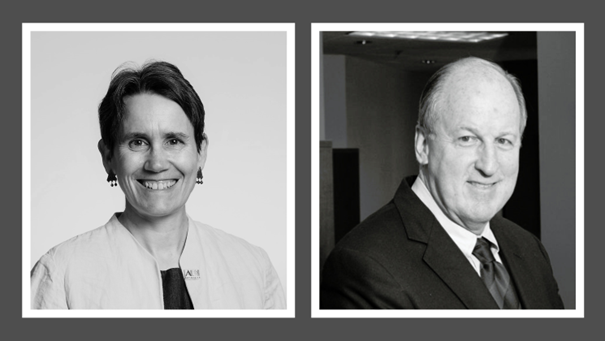The [CII] Resolved ISM in STar-forming galaxies with ALMA (CRISTAL survey) peered back to when the Universe was only about one billion years old – a mere toddler in cosmic terms. These observations are helping scientists understand how galaxies formed and evolved from primordial gas clouds into the organized structures we see today.
Recent News
NSF NRAO Leads Critical Spectrum Studies to Safeguard Radio Astronomy
The U.S. National Science Foundation National Radio Astronomy Observatory (NSF NRAO) has received funding to expand its study of an invisible—and crucial—scientific and technological resource: the radio spectrum.
Largest Oort Cloud Comet Ever Observed Reveals Its Secrets with ALMA’s Powerful Gaze
A team of astronomers has made a groundbreaking discovery by detecting molecular activity in comet C/2014 UN271 (Bernardinelli-Bernstein)—the largest and second most distantly active comet ever observed from the Oort Cloud.
AUI Board of Trustees Elects Christine Wilson as Board Chair and William Harris as Vice Chair

AUI Board of Trustees Elects Christine Wilson as Board Chair and William Harris as Vice Chair
Washington, D.C.— The AUI Board of Trustees met at AUI’s Dunn Loring office in Vienna, VA September 22 and 23. Following President Adam Cohen’s overview of AUI, and reports from the Board and Governance Committees, the Board approved the FY 2023 AUI Corporate budget, elected Christine Wilson and William Harris to serve as the next Board Chair and Vice Chair of the AUI Board, and appointed new Trustee Jay Marx, Former Executive Director of the LIGO Laboratory, California Institute of Technology.
Professor Christine Wilson is an internationally recognized expert in the study of gas and star formation in nearby galaxies. She has been involved in the design and development of the Atacama Large Millimeter/Submillimeter Array since its inception in 1999 and was also a member of the SPIRE instrument team for the Herschel Space Observatory. During her more than 20-year career at McMaster University, Professor Wilson has supervised 9 Ph.D. Students and 5 postdoctoral fellows.
William (Bill) Harris is a Director of Innovation Advisory Partners after serving as the founding Director General of Science Foundation Ireland (2001-2006) and, then Science Foundation Arizona (2006-2020). Prior to Ireland, he was Vice President of Research and Professor of Chemistry and Biochemistry at the University of South Carolina. Dr. Harris served as Assistant Director of the Columbia University Earth Institute and President of the Biosphere 2 Center, which became a western campus of Columbia.
After the election and appointment, the Board heard updates on government affairs from Federal Science Partners and Cornerstone. In the afternoon NRAO Director, Tony Beasley and Deputy Director, Phil Jewell provided an update on the Radio Astronomy Division, followed by closed sessions.
The Trustee dinner on Wednesday evening and the reception on Thursday evening provided an opportunity for the Trustees to discuss business topics and meet with colleagues from the National Science Foundation (NSF), stakeholders from various organizations that support AUI’s work, collaborators, and individuals with whom AUI hopes to build collaborations or may be sponsors of future AUI research activities.
The second day of meetings included Dr. Cohen’s incubator Initiatives and energy portfolio updates, followed by updates on cyber/E-Learning and STEM Initiatives. Board members ending their terms were recognized and honored for their service. The meeting concluded with Board discussions in a closed executive session.
Recent News
ALMA Reveals Stunning Details of Infant Galaxies in the Early Universe
The [CII] Resolved ISM in STar-forming galaxies with ALMA (CRISTAL survey) peered back to when the Universe was only about one billion years old – a mere toddler in cosmic terms. These observations are helping scientists understand how galaxies formed and evolved from primordial gas clouds into the organized structures we see today.
NSF NRAO Leads Critical Spectrum Studies to Safeguard Radio Astronomy
The U.S. National Science Foundation National Radio Astronomy Observatory (NSF NRAO) has received funding to expand its study of an invisible—and crucial—scientific and technological resource: the radio spectrum.
Largest Oort Cloud Comet Ever Observed Reveals Its Secrets with ALMA’s Powerful Gaze
A team of astronomers has made a groundbreaking discovery by detecting molecular activity in comet C/2014 UN271 (Bernardinelli-Bernstein)—the largest and second most distantly active comet ever observed from the Oort Cloud.
